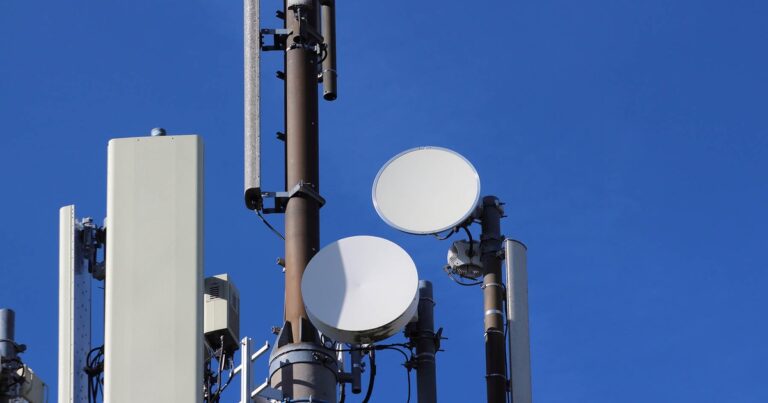Today’s hyperscale data centers run on agile connectivity, with high-speed data transfer essential to smooth operations. But there’s another critical connectivity need growing in data centers around the world.
While most data center operations are fully automated, technicians still need to visit facilities periodically to repair outages, perform upgrades, and perform ongoing maintenance. With the BYOD (Bring Your Own Device) trend becoming more prevalent, many of these technicians are relying on 5G mobile services from their mobile devices. network Allows operators to communicate and access technical support while working in the data center.
Additionally, more hyperscalers are embracing Internet of Things (IoT) devices that use 5G connectivity for measurement and environmental monitoring. The widespread adoption of 5G technology is rapidly changing the way we connect in the modern economy, with 5G subscribers Estimated to reach 8 billion worldwide This is expected to increase from the current population of approximately 1.4 billion by 2028.
However, most 5G networks use the mid-range and higher radio frequency (RF) spectrum, which is easily blocked by modern energy-efficient building materials, furniture, interior walls, and loaded equipment racks. When external RF signals are blocked, mobile connections within a building can be unstable or nonexistent. The result is dropped connections, important calls are missed, and maintenance technicians can’t quickly connect to support personnel, emergency services, or online troubleshooting resources.
After all, without pervasive in-building connectivity, data center operators risk extended outages and missing service level agreement (SLA) targets. How can operations teams provide secure, reliable mobile coverage and ensure seamless voice, data and IoT connectivity throughout their data center facilities?
Keeping up with evolution
Evolution in mobile technology continues to change the way networks are built and operated. As demand for 5G services grows, new RF spectrum is being added to provide greater coverage and bandwidth. In addition to the higher millimeter wave (mmWave) frequencies originally allocated for 5G, mobile network operators are also using new mid-band frequencies such as C-band and Citizens Broadband Radio Service (CBRS).
Mid-band 5G frequencies offer larger channels that significantly increase capacity for outdoor wide-area networks compared to traditional mobile technologies. Unfortunately, these wide RF channels have shorter signal propagation ranges and consume more radio output power, resulting in less overall coverage and poorer in-building connectivity. This need is even more critical for data centers located in remote areas where outdoor mobile service may be lacking.
To give operations teams ready access to multi-operator mobile services, hyperscale data centers often install distributed antenna system (DAS) equipment within their buildings. DAS platforms connect to a variety of mobile network operator signal sources to provide in-building connectivity for IoT devices, emergency response radios, and data center operations teams wherever they are: server rooms, operations centers, machine rooms, and more. However, even data centers with existing DAS platforms will need to upgrade and reconfigure their legacy equipment to support the new 5G spectrum and accommodate variability in signal propagation for those frequencies.
Realizing a sustainable tomorrow
In 2022, US data centers will 4% It accounts for 6% of the country’s total electricity, a figure that is forecast to reach 6% by 2026. As data demand continues to skyrocket, data center operations teams are challenged to increase capacity and performance while simultaneously reducing costs. Power Consumption and operational costs. This goal is becoming more urgent with rapid innovations in artificial intelligence (AI), driving the need for powerful computing infrastructure that requires significantly more energy than traditional data centers.
This means that power consumption is a key factor to consider when choosing the best DAS system for your data center connectivity. Holistic sustainability This is essential as hyperscalers strive to meet aggressive environmental, social and governance (ESG) targets and achieve net-zero carbon emissions.
A modular DAS platform can be upgraded quickly and efficiently as technology evolves, updating only the components needed to continue to meet industry demands. This eliminates the need for complete “rip and replace” projects and reduces waste. Similarly, a DAS platform with smaller, lighter, and more energy-efficient components consumes fewer resources during manufacture, shipping, and operation.
Fiber to the Edge
Hyperscale data center operators already have access to a large amount of fiber infrastructure throughout their buildings and campuses. Leveraging fiber-to-the-edge technology, DAS platforms use fiber connections to carry voice and data to the edge of the network, improving quality of service and reducing dropped calls. The extremely high bandwidth and data speeds enabled by fiber-to-the-edge enable superior in-building connectivity.
Fiber optic data transmission has the potential to improve data security across the network. However, despite the common fiber infrastructure, DAS is a standalone system that never touches the data center network, ensuring maximum security. In addition, fiber-to-the-edge DAS is easier to install and maintain than traditional coaxial cabling, and can be easily upgraded to add capacity or support the latest network transformations, keeping up with evolving technologies.
Mission-Critical Connectivity
With stringent SLA targets and service requirements of up to 99.999% uptime, today’s data center operators rely on optimal efficiency and agility to remain competitive and profitable. Reliable, real-time mobile communications access helps data center technicians stay connected when time is of the essence, keeping day-to-day operations running smoothly, now and in the future.
Doug Bierbower is Vice President of Solutions Engineering for SOLiD Americas and has over 25 years of telecommunications experience including design, optimization, technical support and product management for in-building wireless systems.


